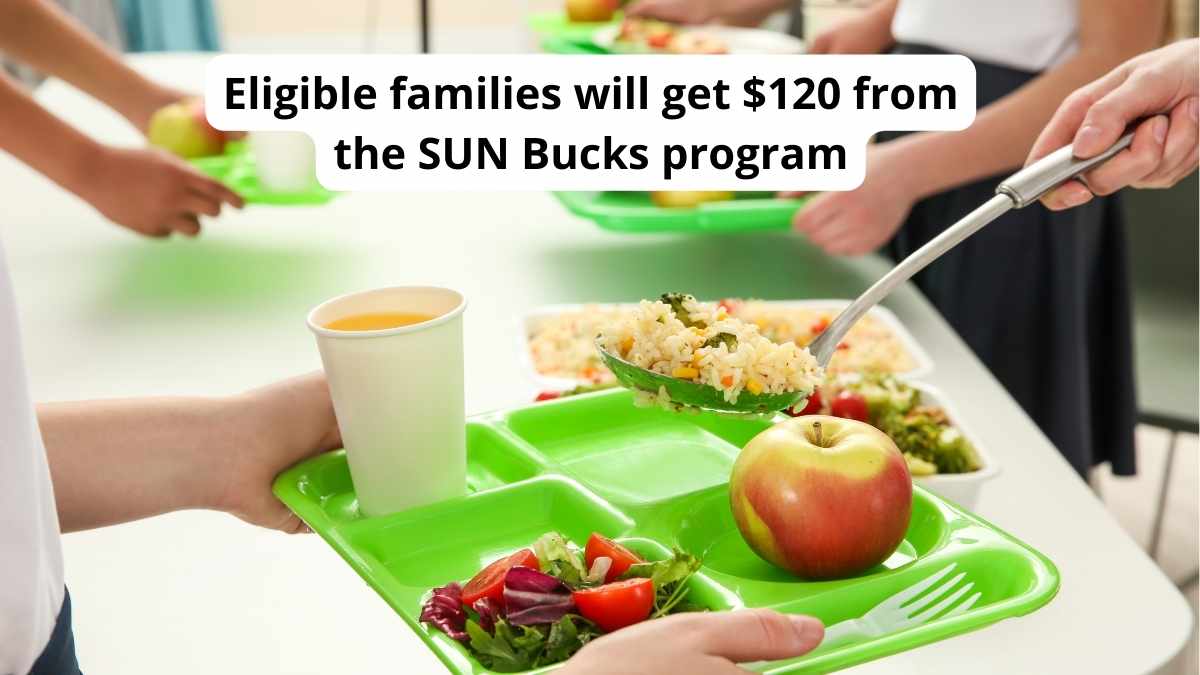Families who are beneficiaries of food stamps, currently known as SNAP benefits, will receive an extra financial aid of $120 during the summer months, particularly because during that time of year, schools and high schools are closed.
For many low-income families with school-age children, school cafeterias are really important when it comes to nutrition. Many of these minors depend largely on the dishes they are served during lunch between classes. That is why the closure of schools and their cafeterias during the summer months causes an imbalance not only in the children’s diet but also in the home economy.
For this reason, the federal SNAP benefits program derived an additional budget this year to distribute $120 dollars per child (in a single payment, or in up to three monthly payments for the entire summer) through the SUN Bucks program to replace at least part of the feeding costs.
How Are SUN Bucks Benefits Disbursed to Families?
Benefits are deposited onto an Electronic Benefits Transfer (EBT) card similar to the one used to deliver SNAP benefits, which can be used just like a debit card to purchase the same types of foods allowed by the United States Department of Agriculture. United States (USDA) for food stamps.
The benefit is paid by the federal government’s Food and Nutrition Service (FNS), but is administered, based on local needs, by state and local authorities across the country. This means that not all beneficiaries will receive the payment on the same date.
School Age Children Are Eligible for SUN Bucks — Qualification Criteria
Children who are eligible to receive these SUN Bucks payments are those who are enrolled in schools participating in the various subsidized lunch and food programs sponsored by the federal or local government.
Also automatically eligible, like those mentioned above, are those whose families are on SNAP benefits, or in the Food Distribution Program on Indian Reservations (FDPIR), or enrolled in Temporary Assistance for Needy Families (TANF).
Most eligible families will receive the benefit automatically, without needing to apply. However, some may have to apply for SUN Bucks directly, according to the FNS. Detailed information will be available through the relevant state provider.
Once enrolled, depending on the recipient’s location, SUN Bucks may be automatically added to their SNAP account or delivered as a standalone EBT card.

States That Will Send Your SUN Bucks Benefits in August
More than 30 states joined the federal initiative, which although it was organized as an open invitation from the USDA to all states, not all chose to participate and some were excluded, citing all kinds of logistical and budgetary reasons.
These are the states that decided not to participate in SUN Bucks:
- Alabama
- Alaska
- Georgia
- Iowa
- Idaho
- Florida
- Mississippi
- South Carolina
- Dakota del Sur
- Oklahoma (although tribal nations within the state are participating)
- Texas
- Wyoming
Other states preferred not to participate because they already had their own food programs for school-aged children in place during the summer months.
The following states will issue SUN Bucks payments in August:
- California: For those whose last names begin with M to Z.
- Connecticut – Payments will now be made in early August after initially being scheduled for June 23.
- Illinois
- Nebraska
- Pennsylvania
- Virginia

